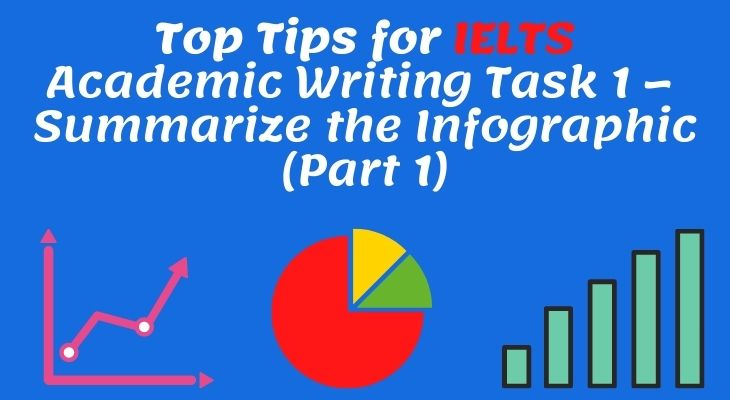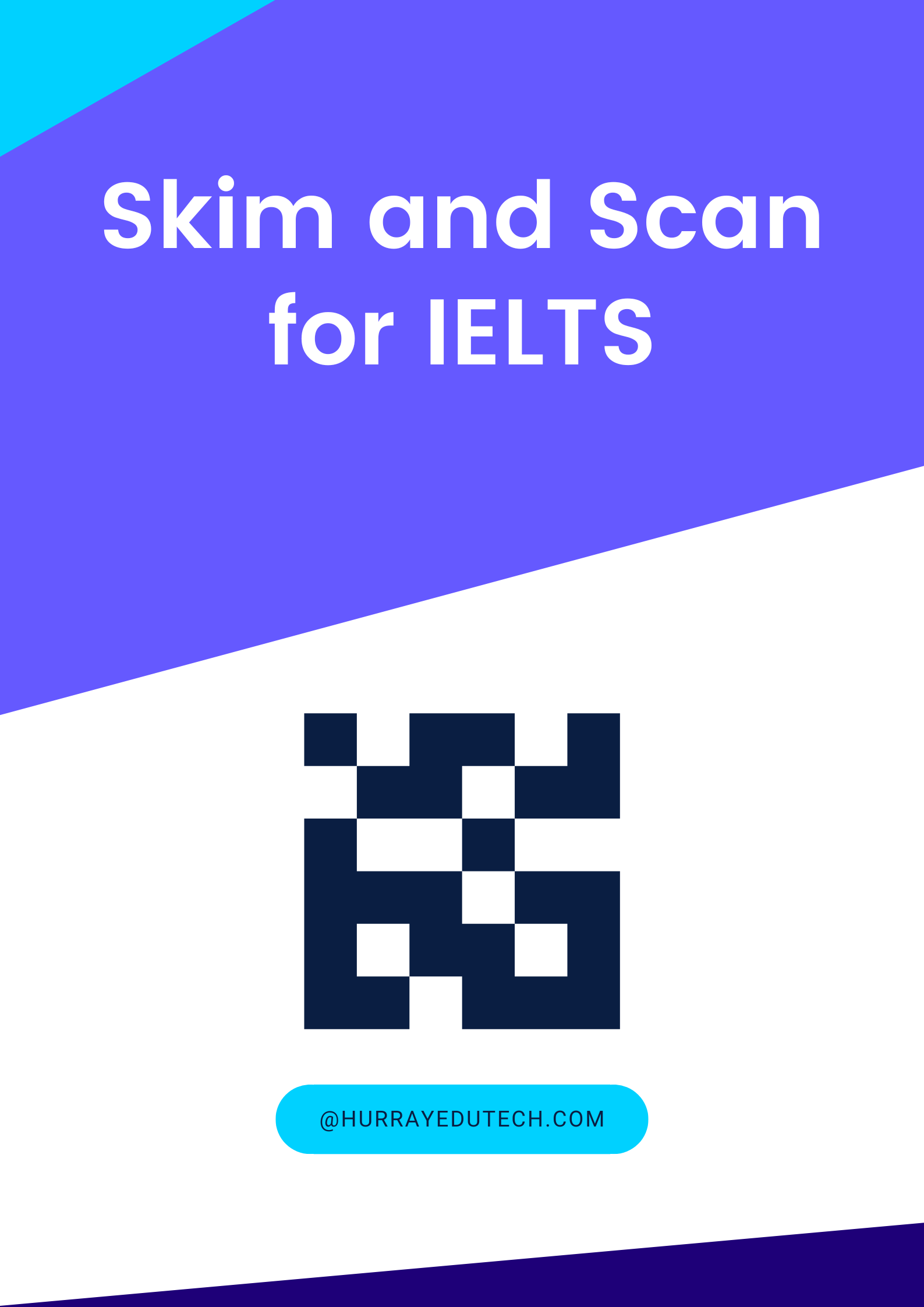Has studying for IELTS Writing got you a little confused? Not sure how to go about it?
No worries… we are here to help! We have lots of tips and tricks up our sleeve, to help you ace the test and get a top band-score.
Today, we will talk about IELTS Academic Writing Task 1 – summarizing the infographic.
About the Task
In this task, you will be given an infographic of some sort. You will be told to perform a particular action, or to answer a question based on the data given in the infographic.
An infographic is a visual representation of information. For instance, it could be a line graph showing you the evolution of some phenomena over time, or a diagram showing all the steps in a process.
Your task is to summarize all the information presented in the infographic in a short write-up, and then answer the question or perform the task.
You must write a minimum of 150 words. You are recommended to take about 20 minutes to complete this task.
The task is a tricky one – but with these tips, it’ll be easy!
Top Tips for IELTS Writing Task 1
1.Take Time to “Read” the Infographic
It is very important that you set aside about 3-5 minutes to carefully examine the infographic and make your points.
What are some of the things you should look out for? Take the following simple example:
- what type of infographic is it, and what is it about – for instance, in the given example, the infographic is a pie chart showing the division of a groceries budget on various items, in one week.
- what is the time period covered (if any) – here, the time period is 1 week.
- what unit of measurement is the data given in – here, the unit is Rupees.
- what data has been given – including the various elements in the infographic and the relevant numeric data (if any). For instance, here you are being given all the types of grocery items and how much each costs.
2.Structuring your Answer
If you have paid close attention to the infographic during the reading stage, the writing stage will be easy!
Always divide a write-up into paragraphs. This helps the reader/examiner to see the flow of ideas more clearly.
- Introduction: here, you will specify what type of infographic it is, what it is about, the time period covered and the unit of measurement. Keep it short and to the point.
- Body paragraphs: here, you will describe the data given.
- Always try to use at least 2 body paragraphs.
- Try to group similar data together – this will allow there to be a structure to your writing, instead of letting it be haphazard.
- Make sure that there is a logical flow from one paragraph to the next.
- Conclusion: the action/question given along with the infographic will tell you what you need to write in the conclusion. It will usually ask for some kind of comparison, or pattern, or change over time.
3.Using correct grammar
The following grammar tips are essential for Task 1.
- Tenses: There are two important aspects of using tenses.
The first aspect relates to your task i.e. you are describing the image in the present. For this, you must use present tense. e.g. “This line graph depicts the changes over a period of…”
The second aspect relates to the time period given in the infographic itself. The information may be relating to something that took place in the past, or it may be making a prediction about the future. You will use the tenses accordingly.
e.g. future tense: “This bar graph predicts that the rate of expenditure will increase by 2025.”
- Voice: always use active voice in this task. Here you are merely describing something that is in front of you. Using passive voice will unnecessarily elongate your sentences, and will not earn you more points.
e.g. “The rate of expenditure on bread exceeds milk by 20 rupees” – YES
“The rate of expenditure on milk is exceeded by bread, by 20 rupees” – NO
4.Vocabulary you need to know
Besides your overall vocabulary, there are certain types of words that will help you to describe the infographic in an accurate and precise way.
Introductory words: use these words to show what the infographic is doing e.g. illustrates, depicts, shows, demonstrates
Linking words: there are a number of words/phrases you can use to show how the different bits of data in an infographic are connected.
To show comparison: compared with, in comparison to, a comparison can be made
To show contrast: in contrast, on the other hand, while, whereas, as opposed to, on the other hand
To show similarity: similar, similarly, parallel, equitable
To show a link between the data and the conclusion: it is concluded, it may be inferred, it indicates, based on, considering
Words for describing data: in some cases, you may not have all the data given in numbers, and you must use other words to make sure you are describing data accurately. You will mainly require such words when comparing data. Even if you do have all the data in numbers, it helps to use words like these.
To show data that is less: under, less than, slightly less than, considerably less than, half of, quarter of
To show data that is more: above, more than, slightly more than, considerably more than, double of, almost double of
To describe data that does not give the exact number: about, approximately, around
Solved task
To see how these tips can be put into practice better, take a look at our model answer.
The task you see is an actual IELTS task.
Please feel free to contact us at 9900426501 or 9900621169 for one-on-one free Overseas Education, IELTS/ PTE consultation. www.hurrayedutech.com











Post Comments